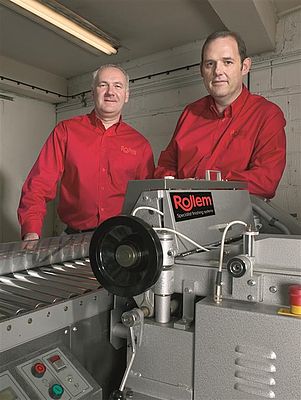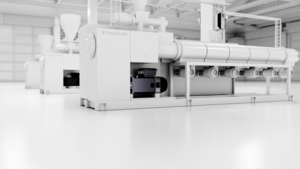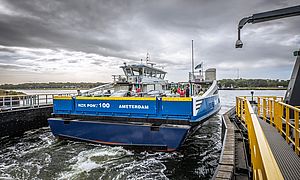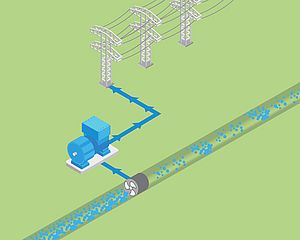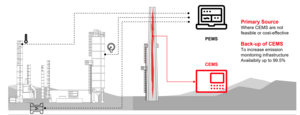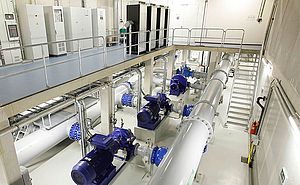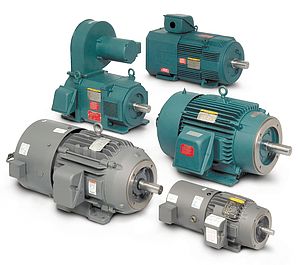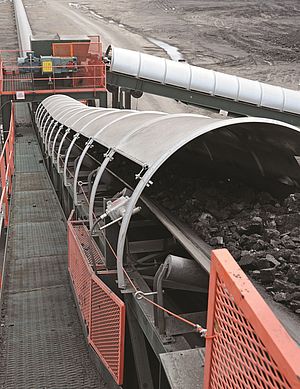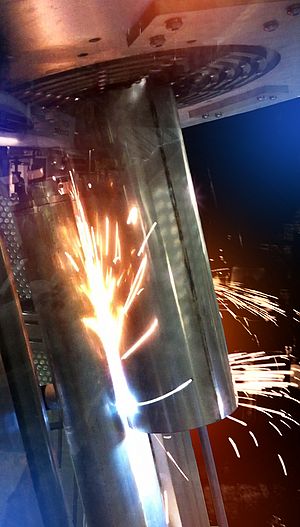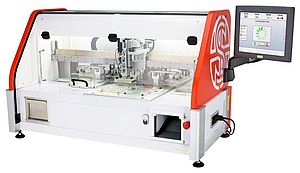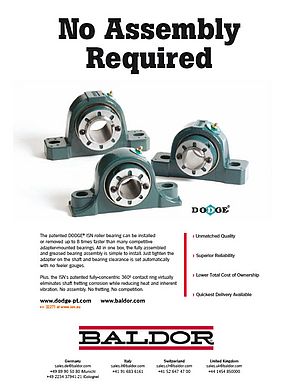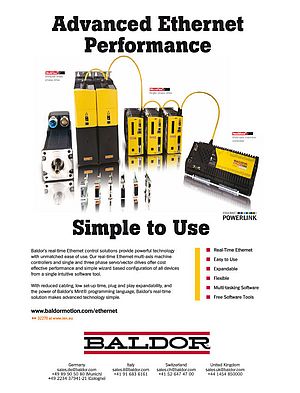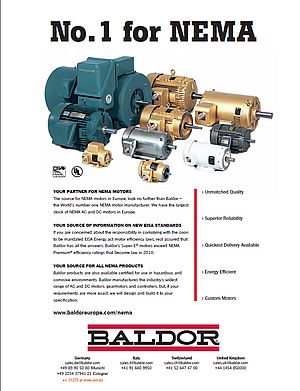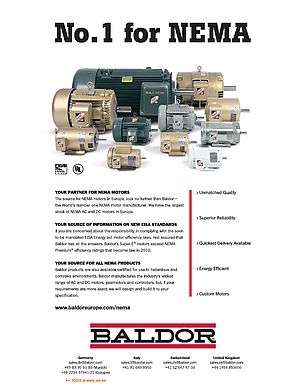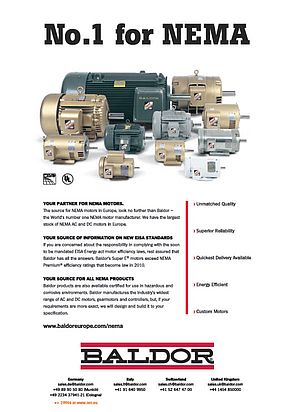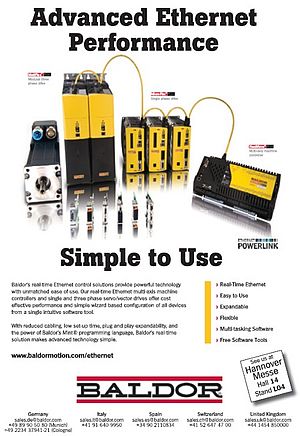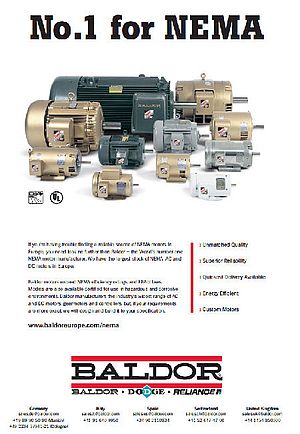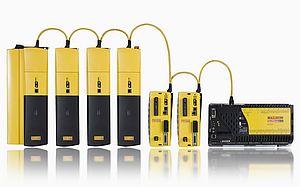An economic multi-axis motion controller and high level software development environment is helping a leading specialist print machinery manufacturer to rapidly evolve its modular finishing system. The motion architecture has just made it easy to add another peripheral to the company's print finishing equipment range.
Rollem specializes in ultra-accurate cutting/perforating/scoring machines, and has built a worldwide reputation for creating print finishing lines for high quality and security related applications. The company's focus on extreme accuracy means that users are often able to squeeze extra units out of production processes or standard paper sizes with Rollem finishing equipment.
At the heart of all of Rollem's current machinery range is a compact ABB controller called NextMove-ESB2. This compact packaged module is capable of controlling up to eight servo and stepper motor axes, and includes onboard analog and digital I/O for general machine control, plus interfaces including a CANopen port for controlling distributed motion and I/O resources. Depending on the particular finishing line configuration and number of motion axes, one or more of these controllers is installed in the distributed control system. ABB's architecture provides Rollem with a granular control solution that scales economically according to the complexity of the required finishing line. NextMove's broad combination of motion and machine control functionality also gives it great versatility to meet the needs of any particular new station in Rollem's expanding modular equipment family.
The newly-designed Descending Card Stacker is typically installed as a third station on a Rollem print finishing line, following slitting and collating stations. This peripheral employs a single axis of movement using a stepper motor, which dynamically varies the height of a stacking tray that is synchronized to a laser sensor detecting the position and height of printed items. In the case of playing card printing for instance, the system can group multiple packs to create a ready-to-use Blackjack deck. In the business card world, the system will group specific printed quantities such as 250 or 500 into a stack for final shipping.
Designing and integrating this new modular peripheral was simplified by the ABB motion control system. The stepper motor axis and its ABB drive connects to the main controller and HMI via the print finishing line's CANopen network. Software-wise, the nature of ABB's MINT motion software language has always made it easy for the Rollem developers to create code, as it uses clear English-like commands and has hundreds of keywords that provide single-command instructions for motion tasks. One of the most common keyword forms used by Rollem throughout its finishing line are a set of commands called FOLLOW for example, which allow axes to be linked and follow a master axis by a programmed ratio.
In the case of the new stacker, Rollem's main software developer Stuart Murphy wrote the control code and the additional code required for the machine's HMI in under half a day, before testing it on the prototype electromechanical hardware. Another recent example of quick reaction is the integration of an application-specific barcode scanner for a particular automated finishing line - which was also written in just a few hours using ABB's MINT language.
Rollem has used ABB motion control technology for many years, and is now installing the second generation of the multi-axis NextMove controller. The original decision to switch to ABB motion control - from a proprietary embedded microprocessor system produced by an external contractor - was prompted by increasingly frequent demands for new functionality. The key selling point of the ABB range for Rollem was the MINT software development environment, with its rich library of ready-to-use motion control functions. MINT's high-level commands - which are similar to the BASIC and PASCAL style programming languages that Rollem's managing director and main software developer Stuart Murphy learnt at college - gave Rollem the confidence to bring the function in house.
Before switching, Rollem's ability to react to customer demand was development-intensive and could take a long time. By switching, Rollem gave itself the ability to react very quickly to customer requests, and to use its imagination to prototype brand new functionality - from basic handling/processing functions to integration into manufacturing information systems. This freedom to innovate is a key factor underpinning the company's current position - where Rollem's equipment often gives users the means to automate and rethink a company's workflow to adopt a new printing business model.
"Traditional printing and finishing lines often involve fiddly and time consuming manual handling and processing stages such as guillotining - and these rely on skilled labour," says Rollem's Stuart Murphy. "ABB's motion control development environment gives us complete control of machine development, and this has allowed us to develop a modular system that can turn finishing into an automated and highly software-centric process. It's helping us to develop with our clients, and bring new printing-based business models to market."
The first-ever production unit of the new stacker has just been installed on a Rollem line at an advanced print-ecommerce or 'web2print' company producing business cards. The complete print finishing line is known as Rollem Revolution, which handles sheet sizes up to 1020 x 720 mm.
A Revolution line consists of several stations. At the start of process is a feeder with a vertical axis for raising a stack of sheets, driven by a 3-phase motor/inverter combination, which is controlled via the ABB NextMove's onboard D/A converter. A second servomotor axis drives the feed roller. A conveyor - driven by another motor/inverter combination - then moves the sheets onto registration and slitting.
An optical sensor detects the registration mark and adjusts a guide rail. The cutting system detects the leading edge of the paper and accelerates the blades to the conveyor speed before performing a single-direction 'interrupt slit' - which creates strips but leaves the outside edge connected. This border keeps the strips in place while the paper turns through 90-degrees for a second registration and slitting stage to separate the individual print items. Rollem's cutting system is very rigid, allowing very accurate cutting which is suitable even for security items, at speeds up to 4000 sheets/hour. Each cutting module uses two servomotors, one to control the acceleration and return of the cutting head, and one for vertical positioning of the rotary blades. The next stage is collation. If the end product is business cards for example, separated cards are collated into a stack by three servomotor motion axes, which move the cards at an angle across the process area into a 'gutter' output channel.



